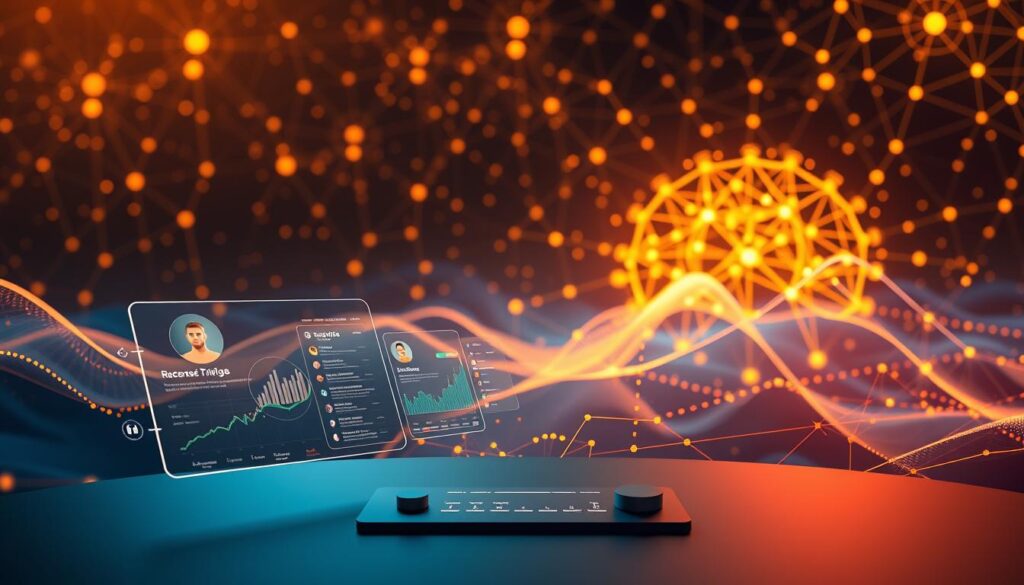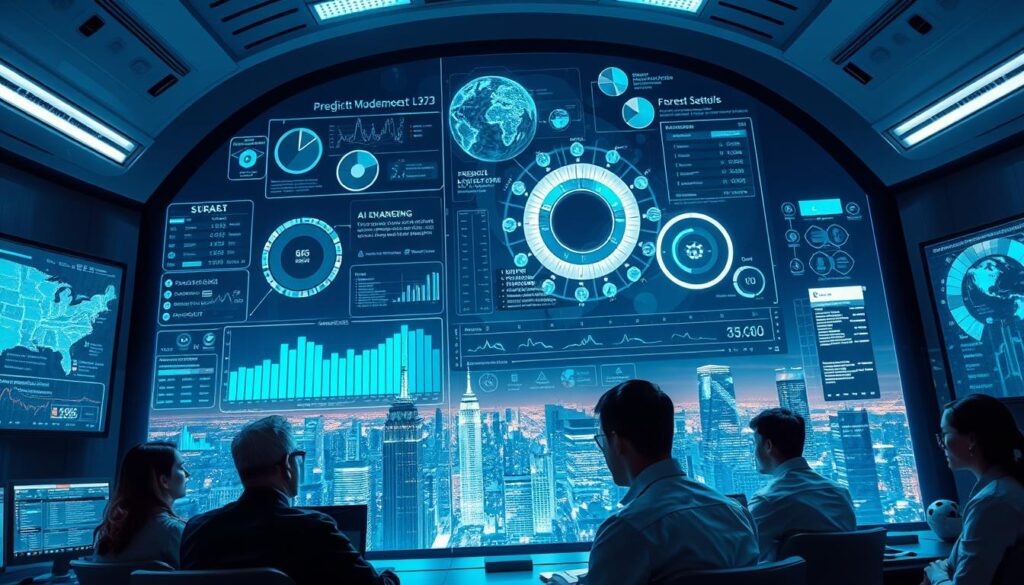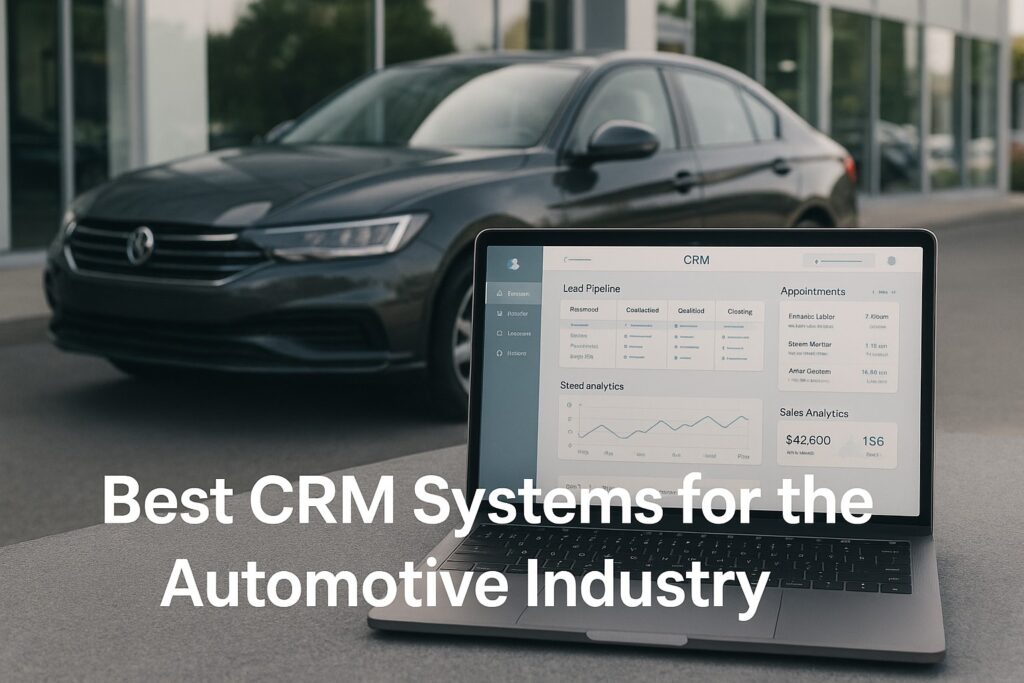Looking ahead to 2026, marketing automation is key for agencies. It changes how they work and help clients.
The world of marketing keeps changing. Agencies must keep up to stay ahead. In this article, we’ll look at the trends for agency marketing and how to get ready.
Using new automation technologies helps agencies work better. It makes customer experiences better and helps businesses grow.
The State of Marketing Automation in 2026
In 2026, marketing automation is changing a lot. The industry is moving towards more advanced and personal marketing plans.
How Automation Has Transformed From 2023
Marketing automation has grown smarter. Now, businesses can make experiences for each customer and make marketing easier. Advanced AI and machine learning technologies helped a lot in this change.

Key Market Forces Driving New Adoption Patterns
Several things are making people use marketing automation more. These include the need for personalized marketing, making marketing work better, and new AI and machine learning tech.
| Market Force | Description | Impact on Adoption |
|---|---|---|
| Increasing Demand for Personalization | Customers want experiences made just for them | High |
| Need for Efficient Marketing Operations | Want to make marketing work better and save money | Medium |
| Advancements in AI and Machine Learning | Helps make automation more advanced | High |
Hyper-Personalization: The New Standard for Client Campaigns
In 2026, hyper-personalization is key for great client campaigns. It changes how marketers reach out to people. This is because they can use lots of customer data to make experiences just for each person.
Hyper-personalization works well in many ways. One big thing is real-time dynamic content orchestration. This lets marketers change content fast based on what customers do and like. For example, a website might show different products based on what you’ve looked at before.
Real-Time Dynamic Content Orchestration
Real-time dynamic content orchestration uses smart algorithms to change marketing content based on customer data. This makes people more engaged and likely to buy. A study showed a 20% boost in sales for companies using this method.
| Technique | Benefits | Average Improvement |
|---|---|---|
| Real-Time Dynamic Content Orchestration | Enhanced customer engagement, improved conversion rates | 20% increase in sales |
| Predictive Behavioral Targeting Systems | More accurate targeting, higher ROI | 15% increase in campaign effectiveness |
| Sentiment Analysis and Emotional Response Optimization | Better customer understanding, improved brand loyalty | 12% increase in customer retention |
Predictive Behavioral Targeting Systems
Predictive behavioral targeting systems use machine learning to guess what customers will do. This helps marketers send better messages, leading to more money back.
Sentiment Analysis and Emotional Response Optimization
Sentiment analysis and emotional response optimization look at what customers say and feel. By knowing how customers feel, marketers can make their messages better. This makes customers more loyal and keeps them coming back.

AI-Powered Creative: From Assistance to Collaboration
AI is now a big help in making things creative. It’s changing how marketing agencies work in 2026. AI helps make marketing plans more smart and personal.

Multi-Modal Generative AI for Cross-Channel Assets
Multi-modal generative AI makes different kinds of content. It can make videos and interactive stuff. This helps keep a brand’s voice the same everywhere, making customers more engaged.
Key benefits include: more content types, a consistent brand voice, and better customer interaction.
Autonomous Creative Testing and Performance Optimization
AI helps test and improve marketing ideas. It looks at how well things are doing and makes them better. This makes campaigns work better.
This saves time and improves the ROI of marketing.
Human-AI Creative Workflows
Working with AI makes creative work better and faster. AI helps with data and ideas, while humans lead the creative direction. This way, agencies make campaigns that really speak to people.
Best practices include: using AI for data and ideas, and humans for creative direction and strategy.
Predictive Analytics and Decision Intelligence
In marketing automation, predictive analytics and decision intelligence are key. They help businesses guess what customers want and make smart choices. This makes marketing better.

Anticipatory Customer Journey Modeling
Anticipatory customer journey modeling uses predictive analytics. It looks at past data and current customer actions. This way, businesses can guess what customers will do next.
Marketers can then plan ahead. They can make customer experiences better by knowing what customers want. This keeps customers happy and stops them from leaving.
Prescriptive Strategy Recommendations
Prescriptive strategy recommendations offer clear advice. They come from deep data analysis and smart algorithms. This helps marketers make fast, smart choices.
With these tips, businesses can make their marketing work better. They can use their resources wisely and get more from their marketing. This helps them stay ahead and reach their goals.
Marketing Automation Trends That Will Redefine Agency Services
Marketing automation is changing fast. Agencies face new challenges and chances. These changes are making how agencies work and help clients different.
Value-Based Automation Service Models
Agencies are moving to value-based automation service models. They get paid based on how well their automation works. This means they focus on making sure their work really helps clients.
This way, agencies and clients can trust each other more. It also pushes agencies to keep making their automation better.
Specialized Automation Strategy Consultancy
Marketing automation is getting more complex. This has made specialized automation strategy consultancy services more important. Agencies with deep knowledge in automation can help clients understand and use automation better.
These experts give advice on picking the right tools and designing good workflows. They also help measure how well automation works for customers.
Client Success Metrics Evolution
With more advanced marketing automation, client success metrics are changing. Agencies are now looking at more detailed ways to measure success. They’re not just looking at simple numbers anymore.
They’re now looking at things like how long customers stay, how efficient their journey is, and the overall return on investment. This shows clients the real value of what agencies do.
Unified Marketing Ecosystems: The End of Siloed Operations
The future of marketing is about breaking down walls. It’s about making one big system that uses data from all places. This way, businesses can give customers a smooth experience and work better together.
These big systems use seamless cross-platform data orchestration. They mix marketing, sales, and service together. This helps businesses understand their customers better and make experiences that keep them coming back.
Seamless Cross-Platform Data Orchestration
Getting data from all over is key to these big systems. It means using info from social media, email, and more. This way, businesses can see everything about their customers at once.
To get this right, companies need strong tools to handle lots of data. They use things like data lakes and cloud-based data warehouses to keep and work with data.
Marketing-Sales-Service Automation Convergence
Another important thing is when marketing, sales, and service work together. This makes a closed-loop system for better customer interaction. It uses automation to make things like getting leads and helping customers easier.
This mix of automation brings many good things. It makes things more efficient, improves how customers feel, and can even make more money. Automation helps cut down on mistakes and makes things happen faster, making customers happier.
Privacy-Centric Automation in the Post-Cookie Era
With cookies gone, a new way of doing things has started. Now, privacy is key. Marketers are learning to keep customer privacy safe while doing their jobs well.
They’re using zero-party data collection frameworks. This means asking customers directly for their info. It builds trust and keeps things clear.
Zero-Party Data Collection Frameworks
Zero-party data is when customers share info on purpose. They might tell brands what they like or need. This way, marketers can make things just right for each person without hurting privacy.
A big survey showed 75% of people like brands that keep their data safe. This shows how important it is to ask for data the right way.
Consent-Driven Personalization Engines
Consent-driven engines are key for privacy. They use what customers say yes to for personal touches. This makes sure what marketers do is both good and respectful.
| Feature | Traditional Personalization | Consent-Driven Personalization |
|---|---|---|
| Data Source | Third-party cookies, inferred data | Zero-party data, explicit consent |
| Customer Trust | Often eroded due to privacy concerns | Enhanced through transparency and control |
| Personalization Effectiveness | Can be highly targeted but risky | Balanced between personalization and privacy |
Automated Compliance Management Systems
Systems for keeping up with rules are very important. They help marketers follow laws like GDPR and CCPA. These systems make sure data is safe and privacy is respected.
Using these strategies, marketers can follow rules and also make customers trust them more.
Immersive Experience Automation: AR, VR, and Beyond
As we look to the future, immersive experience automation is changing how brands talk to people. Augmented Reality (AR), Virtual Reality (VR), and other tech are making new ways to connect with customers. Marketers can now give personalized and powerful experiences to many people at once.
This isn’t just about new tech; it’s about making marketing better. With spatial computing, marketers can mix the real and digital worlds in a cool way.
Spatial Computing Marketing Automation
Spatial computing lets marketers make experiences that are fun and interactive. By using spatial computing marketing automation, brands can make campaigns that change based on what users do. This makes the customer experience better.
This tech makes complex interactions easy. It lets brands send content that fits the user’s space and actions.
Virtual Environment Campaign Orchestration
Virtual Environment Campaign Orchestration means automating marketing in virtual spaces. This lets brands make immersive experiences that are controlled and smooth. It gives customers a story that’s fun and easy to follow.
By automating these campaigns, marketers can make sure the customer’s journey is smooth and personal. This leads to better engagement and more sales.
Measuring Automation ROI: New Metrics for Success
Businesses are spending more on marketing automation. They need to know if it’s worth it. It’s important to see how automation changes customer journeys.
Attribution Models for Automated Customer Journeys
Old ways of tracking don’t work for automated journeys. New methods are being made. They help see how automation changes customer actions and sales.
Automation Efficiency Scoring Systems
Scoring systems show how well automation works. They look at how well tasks are done and how marketing performs. This helps find ways to get better.
Client-Facing Automation Performance Dashboards
Dashboards show clients how automation helps. They show things like how well campaigns do and how much money is made. This helps clients see the value of automation.
Using these new ways to measure helps marketers make better choices. As automation grows, knowing its worth will keep businesses ahead.
Conclusion: Preparing Your Agency for the Automated Future
Looking ahead, marketing automation will change a lot. Agencies need to get ready for these changes. They must understand what’s coming and how to use it.
To be ready, agencies should get the right tech and skills. They need to use new tools like AI and data to help clients. This makes clients happy and helps the agency grow.
A good plan is key for agencies. They should work together, measure results, and focus on what clients need. This way, they can grow and make clients happy.
As we go forward, agencies must keep preparing for the future. This way, they can find new ways to help clients and stay ahead in the market.
FAQ
What are the key marketing automation trends that agencies need to leverage in 2026?
Agencies should focus on hyper-personalization and AI in 2026. They also need to use predictive analytics and build unified marketing ecosystems.
How has marketing automation transformed in 2023?
Marketing automation has grown smarter. It now offers more personalized experiences and easier marketing processes. This is thanks to AI and machine learning.
What is hyper-personalization, and how is it achieved?
Hyper-personalization means giving customers unique experiences. It uses real-time content, predictive systems, and emotional analysis to do this.
How is AI being used in creative tasks?
AI helps in creative tasks and works with humans. It uses generative AI, tests, and workflows to improve creativity.
What is predictive analytics and decision intelligence, and how is it used in marketing automation?
Predictive analytics and decision intelligence use data to guess what customers want. They help make decisions based on data, like modeling journeys and giving strategy advice.
How is marketing automation redefining agency services?
Marketing automation changes how agencies work. It introduces new models, consultancy, and ways to measure success.
What is a unified marketing ecosystem, and how is it achieved?
A unified marketing ecosystem connects data and processes across platforms. It uses data orchestration and automation to bring everything together.
How is privacy-centric automation being achieved in the post-cookie era?
Privacy automation uses zero-party data and consent engines. It also has systems for following rules to keep marketing safe and legal.
What is immersive experience automation, and how is it used in marketing?
Immersive experience automation uses AR and VR for engaging experiences. It uses spatial computing and virtual environments to create these experiences.
How is automation ROI being measured?
ROI is measured with new methods. These include models for automated journeys, scoring systems, and dashboards for clients.


